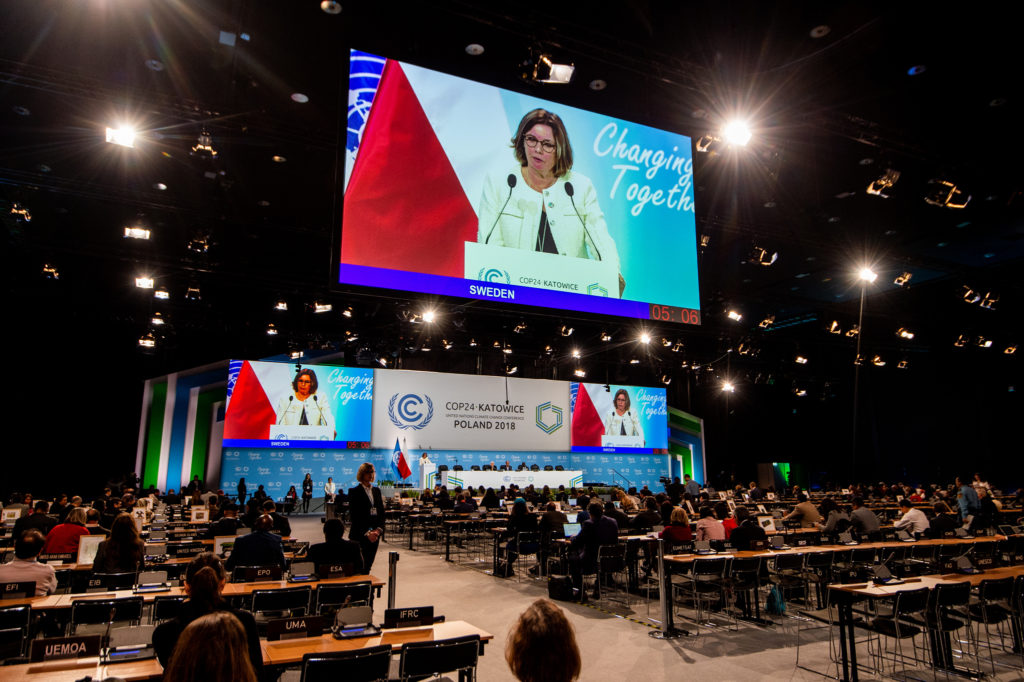Fashion leaders unite on climate action, while world leaders struggle to make progress at COP24
It’s the biggest challenge of our time. And this challenge is the reason representatives from nearly 200 countries have gathered for the 10-day meeting in Katowice, Poland to discuss climate change and action at the annual COP (‘conference of the parties’) meeting.
There were big topics on the agenda including the Paris Agreement, global emissions, public health, the coal industry and of course climate change (the IPCC report specifically).
But while the growing movement around the world seems to suggest a call for change, little is coming from our world’s leaders if this past 10 days is anything to go by.

The meeting has focused on the Paris Agreement, with many countries challenging facets of the agreement. ‘Interpretation’ is the key word coming out of the talks, with many countries wanting to change the original agreement as the ‘interpretation’ of many actions and targets is deemed ‘challenging’, ‘unattainable’, ‘questionable’ and ‘unfair’.
But since the US announced it would withdraw from the agreement in 2017 (yet to formally do so, and US delegates are attending this year’s COP), it has cast a shadow on the landmark signing and the hope of progress that followed (take us back to 2015 please!).
This week, we have learned of many nations including Australia, failing to meet agreement targets, and unable to commit or announce new targets. Incredibly, greenhouse gas emissions in some nations have increased. Fail.
Recently, the UN’s IPCC (Intergovernmental Panel on Climate Change) released a damning and controversial report that was discussed and challenged during the 10-days.
The panel found that the amount of global warming the world has seen to date, 1 degree Celsius, has had devastating results. Extreme fires, floods, rising sea levels, burning of the coral reef, de-stabilisation of the Artic and melting glaciers in Antarctica. The report continues, the increasingly severe effects as soon as we hit 1.5 degree Celsius – ‘an outcome that can’t be avoided without emissions cuts so steep that they would require societal transformations without any know historical parallel’.
It’s grim.
So why can’t our leaders move forward?
It appears the biggest challenge may in fact be getting the right political leaders in power with the right policies in order to make an impact. But this has proved difficult in the past.
The people’s favourites, Canadian Prime Minister Justin Trudeau and French President Emanuel Macron, have both failed pushing through climate solution policies in their respective countries – this week President Macron failed to implement a gas tax due to days of public protest and party resistance.
Meanwhile, in Australia, it’s all talk amongst political parties, and this year new Prime Minister Scott Morrison abandoned the country’s policy to cut greenhouse gas emissions. Australia is now one of two countries from the Paris Agreement that has no climate change policy, the US is the other, announcing their withdrawal from the agreement and removal of climate regulations in the country.
So who can we look up to for the challenge?
While world leaders struggled to make progress in Poland, this week leading fashion brands, retailers, organisations and suppliers have agreed to address the climate impact of the industry across the entire chain.
Leaders from the biggest names in fashion including Burberry, Adidas, H&M Group, Puma, Target and leading organisations have committed to implementing and supporting the Fashion Climate Charter for Climate Action. The charter, which aligned with the goals of the Paris Agreement, aims for the industry to achieve zero emissions by 2050.

Stella McCartney has long advocated for more sustainable practices in the fashion industry, and her strong support for the charter has had an enormous impact on the industry’s embracement of the movement. By signing the charter for climate action, the presidents and CEO’S of these companies are confirming their commitment to addressing climate change and their willingness to clean-up a sector that has been long been touted as one of the worst polluting industries.
Despite the incredible task the fashion industry faces, the collective statement of the signatories has the capacity to drive change and force other industries to follow suit. And if we can’t look to our world leaders to implement change, then maybe industry bodies can use their power to do so.
For more information, please visit;